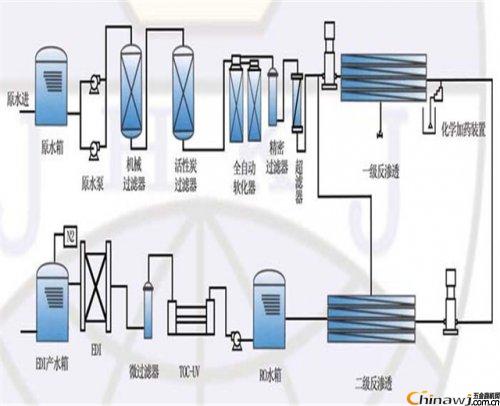The pure water production equipment is mainly based on reverse osmosis, supplemented by pretreatment. Daily correct operation of the equipment can effectively reduce equipment failure and maintenance costs, and effectively increase the life of the reverse osmosis membrane, saving equipment costs. Shaanxi Kaipuwei answers your questions. Touch Screen VICAT Softening Point Tester Touch Screen Vicat Softening Point Tester,Deformation Tester Vicat,Thermal Deformation Test Machine,Thermal Deformation Vicat Tester Dongguan Best Instrument Technology Co., Ltd , https://www.dgbestinstrument.com
Daily use and maintenance of reverse osmosis equipment
First, the operational record of the reverse osmosis system
From the commissioning of the system to the stable operation of the system, all system-related operational data must be recorded and documented in order to analyze the operation of the entire system. In addition, the operation of data records is also an effective means to find and eliminate system failures, but also the basis for applying for quality assurance.
The main record data: pre-processing record, membrane system operation record, dosing system operation record, chemical cleaning record.
Second, the daily start and stop of the reverse osmosis membrane system
Once the reverse osmosis system is put into operation and stable, it should be kept in a stable state as much as possible, but in fact most reverse osmosis systems must be started and stopped frequently. Each system start and stop involves changes in flow and pressure, creating mechanical stress on the membrane elements. Therefore, if necessary, reduce the starting and stopping frequency of the system as much as possible, and the normal starting and stopping should be smooth.
Precautions when the reverse osmosis device is stopped
1. The entire system must be flushed with product water or pretreated water at low pressure to rinse off the concentrated water on the membrane surface to prevent salt precipitation.
2. Do not add other agents such as scale inhibitors during low pressure flushing. (If using a pre-treatment water flushing system, it should be kept small)
3. To prevent back pressure, first open the production water discharge valve.
4. The flow rate and pressure drop should be slow. During the depressurization, the influent flow rate of the system should not exceed the maximum water inflow of the membrane element. The pressure difference between the two ends of the pressure vessel should not exceed the limit value.
Third, reverse osmosis system management during outage
1. Outage 0-48 hours management
Daily shutdown 0-48 hours of management can be referred to the normal shutdown procedure. The key is to perform low-pressure flushing during shutdown. To prevent microbial growth, flush every 24 hours.
2. Reverse osmosis system is out of service for 2-25 days of management
The shutdown can be carried out according to the normal shutdown procedure. After the shutdown, the pressure vessel is filled with reverse osmosis product water, and all inlet water, concentrated water valves and water production valves are closed to prevent membrane components from drying and microbial growth.
When the temperature is higher than 20 degrees, it needs to be washed once every 12 hours; when the temperature is less than 20, it should be washed once every 24 hours. Flushing must use pure water produced by reverse osmosis.
During shutdown, the temperature should be maintained between 5 and 45 degrees. Low temperature is good for the preservation of membrane components, but the system should be prevented from freezing.
3. Management of reverse osmosis system out of service for more than 25 days
The shutdown is carried out in accordance with the normal shutdown procedure and the system is flushed with product water and low pressure.
It is best to carry out a chemical cleaning and sterilization treatment. After the cleaning, the reverse osmosis water supply low pressure flushing system is used to know that the concentrated water conductance is consistent with the incoming water conductance.
Prepare 1.0% sodium bisulfite protection solution with pure water produced by reverse osmosis, circulate the membrane element by the cleaning system, remove the air in the pressure vessel, completely soak the membrane element in the protection liquid, prevent the membrane element from drying, close All inlet valves, concentrate valves, and water valves prevent air from entering.
Check the pH of the protective solution once a week. If it is less than 3, replace the protective solution.
During shutdown, the temperature should be maintained between 5 and 45 degrees. Low temperature is good for the preservation of membrane components, but the system should be prevented from freezing. (Shaanxi Kaipuwei for your professional answer)
Http://news.chinawj.com.cn  Editor: (Hardware Business Network Information Center) http://news.chinawj.com.cn
Editor: (Hardware Business Network Information Center) http://news.chinawj.com.cn 